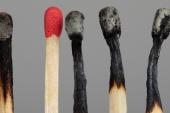‘Upstanders’ Needed, Says Practical Guide Tackling Bullying, Harassment
The new document, aimed at cardiologists, goes beyond identifying the problem to offering practical steps to counter it.

A new practical guide addressing bullying and harassment within the field of cardiology provides actionable recommendations for bystanders, who here have received the new moniker “upstanders.”
It’s no secret that the field of cardiology has had issues with hostility in the past, with underrepresented minority groups and women bearing the brunt of the misconduct. What to do about it has been an open question.
“We have moved along from identifying a problem with bullying and harassment,” Renée P. Bullock-Palmer, MD (Deborah Heart and Lung Center, Browns Mills, NJ), the senior author on the new guide, told TCTMD. “The take home message is that if you have been a victim of this or have witnessed this, to really say something. . . and do something about it.”
Writing in the Guest Editor’s page in the September 20, 2023, issue of JACC: Case Reports, Katia Bravo-Jaimes, MD (Mayo Clinic, Jacksonville, FL), Bullock-Palmer, and colleagues outline a practical pathway for which they would like to see bullying and harassment in the field addressed.
Notably, they opt to use the term “upstanders” in place of the traditional “bystander.” The goal of doing so was to emphasize the power that a witness can have, even though it can be “intimidating,” according to Bullock-Palmer. Instead of merely being a support person for the victim but keeping quiet, she said that those who observe bullying or harassment should be upstanders by both “saying something to that person and advocating for [them]. If you can, even escalate it to leadership. . . . Being an upstander [can] help to validate their situation.”
The paper also provides definitions for a variety of situations, examining different scenarios within three categories—Bullying and Incivility, Sexism and Gender Disparities, and Microagressions. Bullock-Palmer highlighted a few, calling out “benevolent sexism” as something that “stems from an often well intended attempt to shield women from perceived harm or hard work, but the decisions or advice that affect them do not consider the will and goals of the woman herself.” One example would be not offering a leadership position to a woman without even asking her due to the perception that she might be too busy with her family life, Bullock-Palmer explained.
To address these, they suggest using the acronym “ACTION,” which offers a framework for strategies that can be used in the wake of problematic encounters, along with sample:
-
Ask clarifying questions
-
Curiosity instead of judgement
-
Tell the facts you observed
-
Intention versus impact
-
Own your thoughts, share your reactions
-
Next steps
If a witness were to do just one thing in response to bullying or harassment, said Bullock-Palmer, that should be to report the facts of what happened. “Dealing with the situation earlier rather than later is very helpful because sometimes that can impact change, either change in behavior . . . a change in leadership,” she said.
Bullock-Palmer acknowledged that these issues are nothing new, especially in the field of cardiology, and that she has felt discouraged at times. “Unfortunately, change happens very slowly,” she said. “The younger generation gets it, . . . but I think there is that established, engrained male dominance and I think it's because of that the change has been very slow.
“We're hoping that the more we speak about it, the more we address it, the more we not only say ‘this is a problem’ but help deal with the problem, will hopefully make the change more impactful,” Bullock-Palmer concluded.
Yael L. Maxwell is Senior Medical Journalist for TCTMD and Section Editor of TCTMD's Fellows Forum. She served as the inaugural…
Read Full BioSources
Bravo-Jaimes K, Costello BT, Reza N, et al. A practical guide to address harassment and bullying in cardiology. JACC Cas. 2023;22:101988.
Disclosures
- Bravo-Jaimes and Bullock-Palmer report no relevant conflicts of interest.




Comments